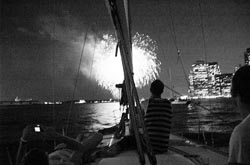ARTLANTIC: Atlantic City’s Public Art Spaces
A park, a playground and outdoor exhibition on Jersey’s casino island

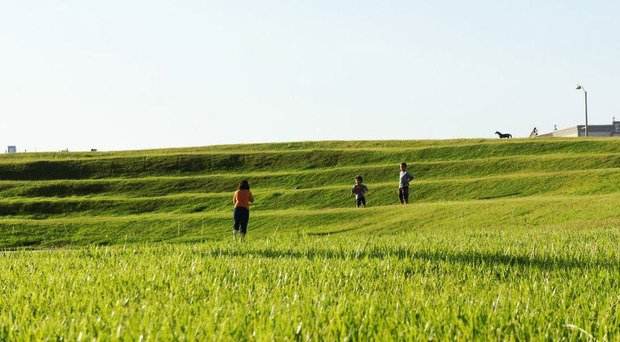
A city forever changing, dotted with many historic attributes: A resort location starting in the mid-1850s near enough to New York City and Philadelphia, the longest continuous boardwalk in the world, the East Coast’s original gambling capital, further popularized by television culture. Of all that it can boast about, Atlantic City, New Jersey has generally been lacking one type of scene—the arts.
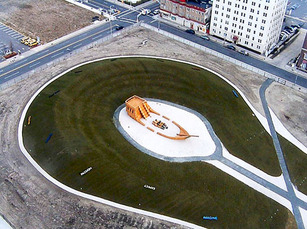

In an effort to bridge that disconnect, the Atlantic City Alliance (ACA) and the Casino Reinvestment Development Authority (CRDA) initiated a push to rebrand and revitalize the Jersey Shore island. Their goal was to bring something to Atlantic City that isn’t just gaming. Thus ARTLANTIC—the first of its kind—was born. It’s a free public art installation because, according to ACA Chief Strategy and Communications Officer Jeff Guaracino, “arts and arts districts change cities.” He’s right, and since its launch, ARTLANTIC has changed what the city has to offer and how people interact with the outdoors.
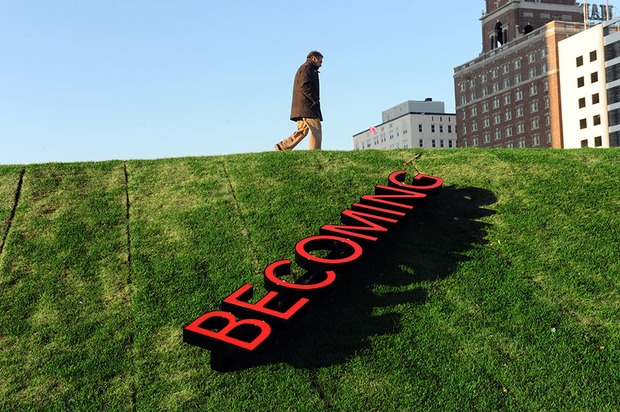
Lance M Fung of Fung Collaboratives was called in to be the project’s curator, but in many ways, he has also become its storyteller—between working with artists and landscapers, finding volunteers and spearheading a community. The two ARTLANTIC locations began as vacant lots, each donated for the community exhibitions, and Fung took it from there.
The curator hosted mixers around the city and learned that what people wanted was a “clean, safe, quiet, enclosed space.” He noted that “the boardwalk was a freeway and there were no roses to stop and smell.” These ideas blended together, along with the weight that ARTLANTIC would be an extension of how the art world perceives public art.
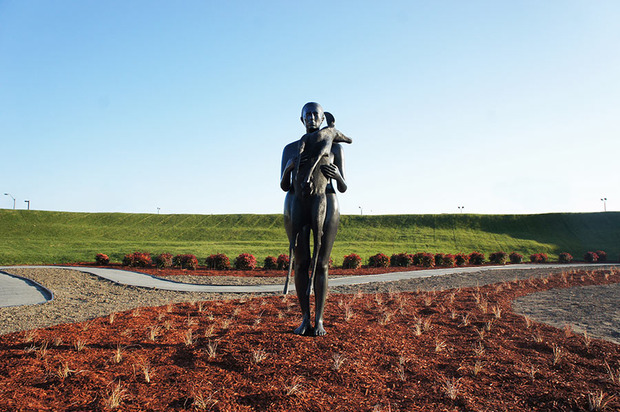
Fung says it all began with a “minimal conceptual foundation.” At the first installation, two mounds were erected and sculpted into an open amphitheater; figure eight fashion, drawing inspiration from roller-coasters. This stage allowed the space to showcase what became three solo exhibition areas; one in each semicircle and one in all the surrounding land. These spaces work harmoniously while they “maintain the reverence” of the individual artists’ work, according to Fung.
Seven artists, and landscape design firm Balmori Associates, stepped in as contributors. All the work is site-specific, having been made for the space or loaned by the artists’s private collections. From local stone and vegetation to concepts inspired by Atlantic City, all of the elements forge a new arts identity for the area, while reinforcing the principals that have made it what it is.
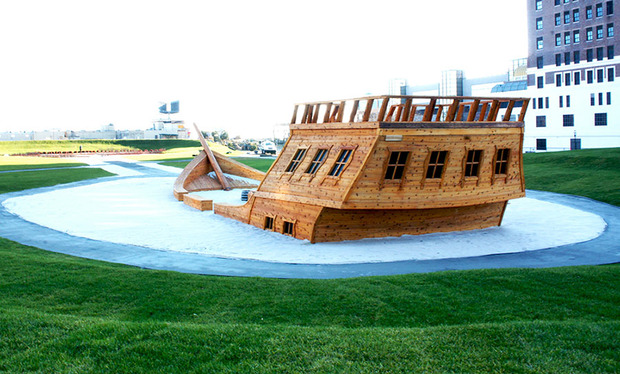
There is an invitational through-line to all the artwork showcased. Conceptual artist Robert Barry, delivers his largest scale work to date. His untitled 2012 piece places 23 fabricated channel letters composed of Lexan, aluminum, LEDs, steel plate, and anchors along the rolling grassy hills. Each piece asks to be read, noted, documented and compared to the next.
Cradled within one hill, Ilya and Emilia Kabakov‘s “The Devil’s Rage” (2012) stands as an immersive pirate ship re-creation built from Ceder, galvanized nails, corten steel straps, signboard, paint, and gold coins. It’s playful, while also providing commentary on its surroundings. Situated directly opposite, artist Kiki Smith contributes two-fold. More obvious, her 2003 Patinated Bronze sculpture, titled “Her” forms a centerpiece. Smith’s second contribution happens to be the red garden that “Her” is placed within. A total of 77,728 plantings grace the soil, each designed to bloom and blossom at a different time of year, draping the space with red carpeting. The red garden was a dream of Smith’s since the 1980s and with Balmori’s execution, berries, leaves and flowers will meet each season anew.
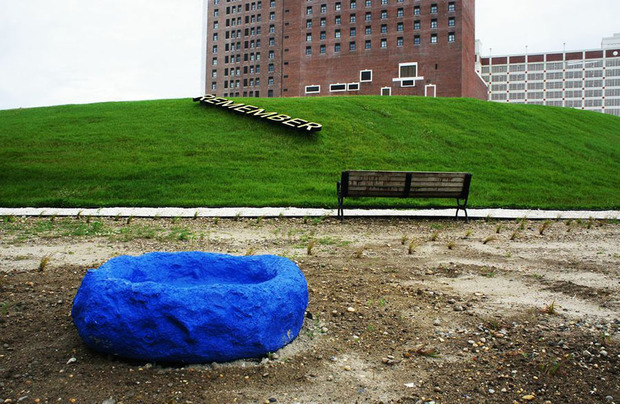
Three artists exhibit beyond the raised mounds. Peter Hutchinson‘s “Triple Thrown Rope” (2013) contains three interwoven gardens each defined by boulders, flowers or bushes. Hutchinson’s process incorporates throwing a rope forward, relying upon chance and circumstance, then outlining the fallen rope, and constructing his gardens atop. Jedediah Morfit‘s “The Flood Suite” (2012) brings function together with art. These three identical sets of ornately sculpted aluminum lawn furniture yield scenes of the local city life. His “Mama’s in the Arbor” (2012), also an aluminum sculpture, functions as the entire installations entrance. It is a deeply detailed relief while being a welcoming gatekeeper. Our personal favorite, Robert Lach‘s “Refuge Nest Colony,” is the interdisciplinary artist’s first public installation. His series of seven nests, built from debris that had washed up on the shore, and then cast in polyester fiberglass resin, are joyful and invitational. They are crafted to be sat in, providing ground level views of all the surrounds. The primary colors lend a celebratory, playful energy.
A 10-block walk down the boardwalk, you’ll find ARTLANTIC’s second location: Étude Atlantis. The entire space features artist John Roloff‘s walk-in mural and fountain, each bearing optical illusion elements. Built from plywood, paint, concrete, asphalt, mirror-polished stainless steel sheets, aluminum, PVC piping, LED waterproof flexible light, misting system, water pump, mirror polished stainless steel uprights, stainless steel cable, and turnbuckles, this 2013 piece is the exact reprieve that Fung was seeking from the boardwalk.
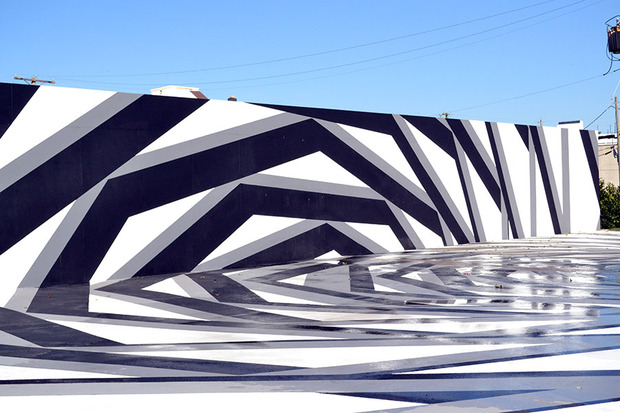
While the project is forever developing, with nature and the role of the seasons factoring into its appearance, visitors seek out or stumble upon both the sprawling first location and the vibrant second. In many ways, both spaces are art playgrounds. They’re worth the visit, but equally importantly: They’re good for the community.
ARTLANTIC: Wonder is located at 1700 Pacific Avenue (between Indiana Ave and Dr MLK Blvd) and ARTLANTIC: Étude Atlantis is situated at 2701 Boardwalk (between California and Belmont Aves).
Images courtesy of Fung Collaboratives

